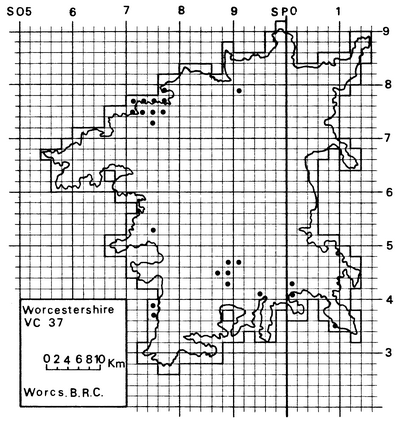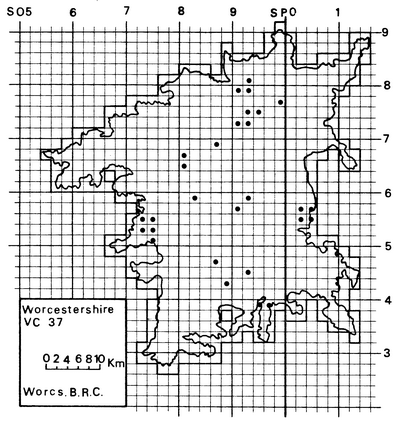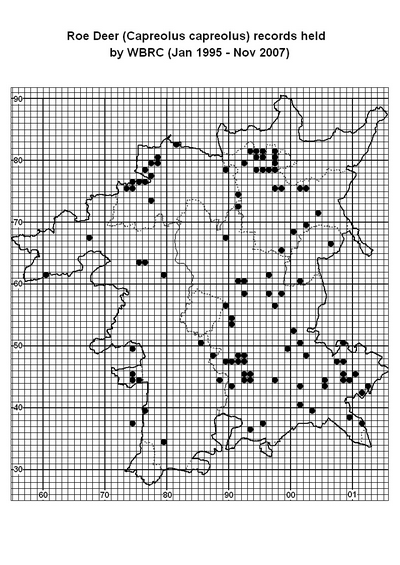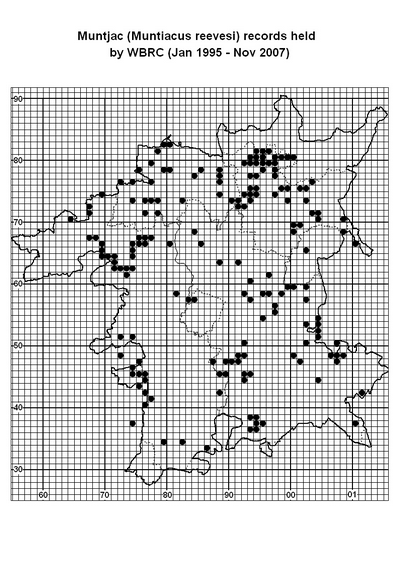

Worcestershire Record No. 25 November 2008 pp. 20-21
Harry Green
Everyone involved in forestry has been aware for some time of rising populations of deer throughout England, accelerating in recent years, probably because of mild winters and plenty of winter forage provided by autumn sown crops. In woods where there are high uncontrolled populations of deer they cause damage to the ecosystem by excessive grazing and browsing which stunts and kills young coppice growth, seedling trees and other ground flora. In the worst examples the understorey is grazed out and a browse line forms on the trees at the height deer can reach. Regeneration (tree and shrub growth) of woodland is, in severe cases, prevented. As deer grazing increases woodland biodiversity shrinks and declines of small mammals, birds, vascular plants, bryophytes, lichens, and many invertebrates, especially those of leaf litter and the lower zones of woodland, have been documented. Fuller & Gill (2001), editors of a symposium “Ecological Impacts of deer in woodland”, present a useful series of papers providing clear evidence of these declines.
In Worcestershire deer damage in woods has been patchy and generally at a low level. However, in recent years damage has increased and this is particularly a problem when woodland coppice regimes are introduced (usually for wildlife conservation reasons) and when natural regeneration (of trees and shrubs) is the aim following forestry operations. Furthermore, nowadays, any woodland tree planting requires protection of young trees to prevent deer browsing and fraying (by Roe deer) as well as protection from rabbits.
The data gathered for the forthcoming Atlas of Worcestershire Mammals illustrate the increases in Roe Deer and Muntjac. The maps (figures 1-4) of course show distribution and not numbers but comparison of the 1980s maps with the situation round 2000 clearly shows the spread of these species. Because it has been impossible to search every wood in Worcestershire the actual spread is certainly even greater – the majority of woods in Worcestershire now probably harbour muntjac and in the last five years sightings of Roe Deer and records of damage caused by them have steadily increased. If the numbers of deer continue to increase unchecked there will be a decline in woodland biodiversity in the county as indicated by many studies elsewhere. Further information and useful references can be found in the new 4th edition of the Mammals of the British Isles handbook.
One aim of woodland wildlife conservation has been to re-introduce coppice regimes on ancient semi-natural woodland (ASNW) nature reserves and this objective has been increasing difficult to implement because of deer browsing the re-growth on coppice stools. This has been particularly noticeable in Grafton Wood (jointly owned and managed by Worcestershire Wildlife Trust and Butterfly Conservation). This ASNW is typical of many central Worcestershire woods, once managed as coppice with standards woodlands with a highly productive understorey. When the demand for this product declined many of these woods were planted with oak around 1900 and developed into oak woodland with a subsidiary understorey partly suppressed by shading as the closely spaced oaks grew into big trees. The reason for reintroduction of coppice regimes in parts of these woodland reserves is to provide conditions for those vascular plants and invertebrates which thrive in the alternating patterns of sunshine and warmth (when coppice is cut) and shade (full coppice growth ready for re-cutting). This includes plants like violets, primroses and cowslips, and butterflies such as the Pearl-bordered and Small pearl-bordered fritillaries. The latter have declined dramatically in recent years.
To work out the best way of preventing and monitoring deer damage in Grafton Wood considerable efforts have been made to survey coppice re-growth (or otherwise). Some results of these studies have been reported in Worcestershire Record issue18, April 2005, pages 29-31. The following article provides a further update and discussion of the surveys and problems encountered in Grafton Wood. It is important that attempts are made to record and monitor a very striking change in species numbers and distribution and the effect on other species. Hopefully a scientific approach can be used to try and solve the problems and guide practical work.
Roe Deer records from 1984 Muntjac Records from 1984




| WBRC Home | Worcs Record Listing by Issue | Worcs Record Listing by Subject |